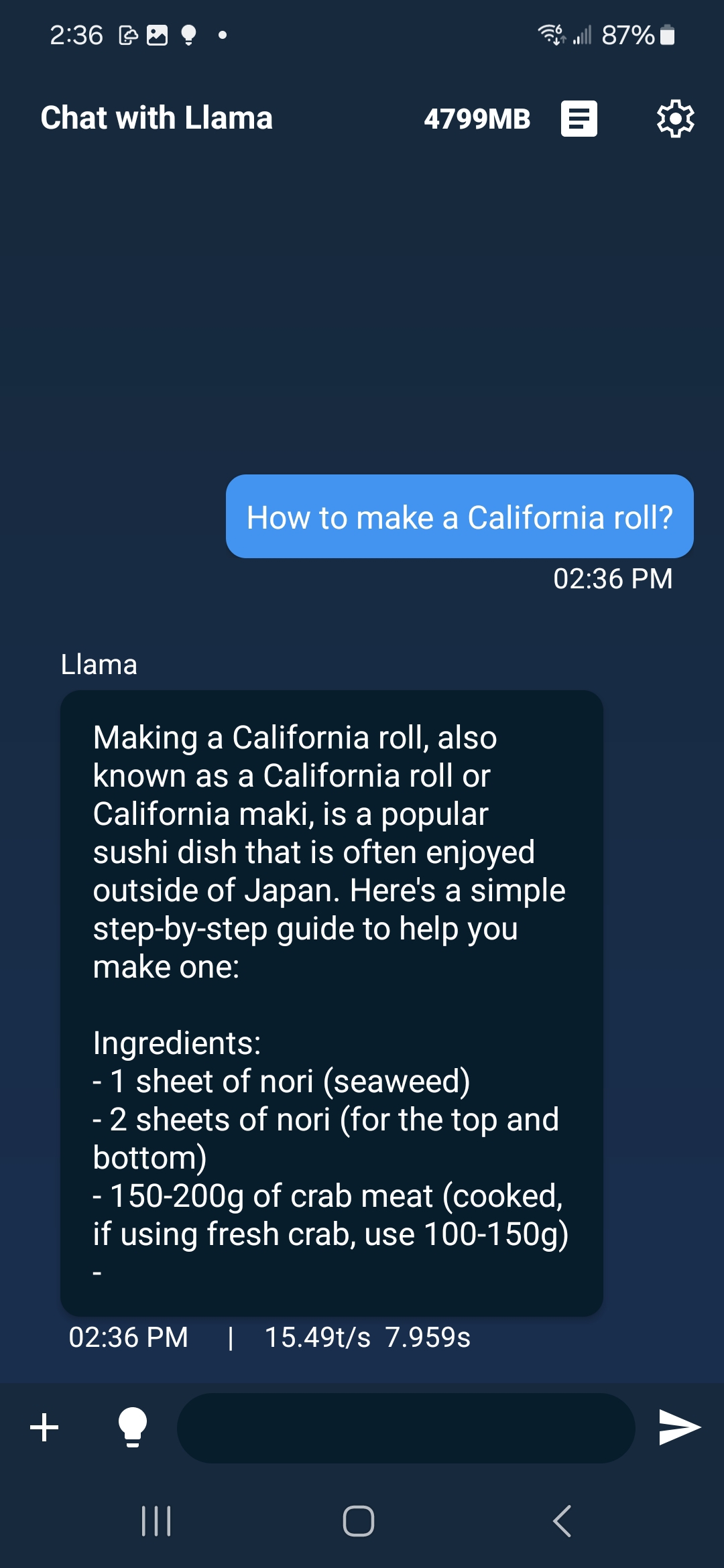HuggingFaceTB/SmolLM3-3B is quantized using torchao with 8-bit embeddings and 8-bit dynamic activations with 4-bit weight linears (8da4w). It is then lowered to ExecuTorch with several optimizations—custom SPDA, custom KV cache, and parallel prefill—to achieve high performance on the CPU backend, making it well-suited for mobile deployment.
We provide the .pte file for direct use in ExecuTorch. (The provided pte file is exported with the default max_seq_length/max_context_length of 2k.)
Running in a mobile app
The .pte file can be run with ExecuTorch on a mobile phone. See the instructions for doing this in iOS and Android. On Samsung Galaxy S22, the model runs at 15.5 tokens/s.
Running with ExecuTorch’s sample runner
You can also run this model using ExecuTorch’s sample runner following Step 3&4 in this instruction.
Export Recipe
You can re-create the .pte file from eager source using this export recipe.
First install optimum-executorch by following this instruction, then you can use optimum-cli to export the model to ExecuTorch:
optimum-cli export executorch \
--model HuggingFaceTB/SmolLM3-3B \
--task text-generation \
--recipe xnnpack \
--use_custom_sdpa \
--use_custom_kv_cache \
--qlinear \
--qembedding \
--output_dir ./smollm3_3b
Quantization Recipe
First need to install the required packages:
pip install git+https://github.com/huggingface/transformers@main
pip install torchao
Untie Embedding Weights
We want to quantize the embedding and lm_head differently. Since those layers are tied, we first need to untie the model:
from transformers import (
AutoModelForCausalLM,
AutoProcessor,
AutoTokenizer,
)
import torch
model_id = "HuggingFaceTB/SmolLM3-3B"
untied_model = AutoModelForCausalLM.from_pretrained(model_id, torch_dtype="auto", device_map="auto")
tokenizer = AutoTokenizer.from_pretrained(model_id)
print(untied_model)
from transformers.modeling_utils import find_tied_parameters
print("tied weights:", find_tied_parameters(untied_model))
if getattr(untied_model.config.get_text_config(decoder=True), "tie_word_embeddings"):
setattr(untied_model.config.get_text_config(decoder=True), "tie_word_embeddings", False)
untied_model._tied_weights_keys = []
untied_model.lm_head.weight = torch.nn.Parameter(untied_model.lm_head.weight.clone())
print("tied weights:", find_tied_parameters(untied_model))
USER_ID = "YOUR_USER_ID"
MODEL_NAME = model_id.split("/")[-1]
save_to = f"{USER_ID}/{MODEL_NAME}-untied-weights"
untied_model.push_to_hub(save_to)
tokenizer.push_to_hub(save_to)
# or save locally
save_to_local_path = f"{MODEL_NAME}-untied-weights"
untied_model.save_pretrained(save_to_local_path)
tokenizer.save_pretrained(save_to)
Note: to push_to_hub you need to run
pip install -U "huggingface_hub[cli]"
huggingface-cli login
and use a token with write access, from https://huggingface.co/settings/tokens
Quantization
We used following code to get the quantized model:
from transformers import (
AutoModelForCausalLM,
AutoProcessor,
AutoTokenizer,
TorchAoConfig,
)
from torchao.quantization.quant_api import (
IntxWeightOnlyConfig,
Int8DynamicActivationIntxWeightConfig,
ModuleFqnToConfig,
quantize_,
)
from torchao.quantization.granularity import PerGroup, PerAxis
import torch
# we start from the model with untied weights
model_id = "HuggingFaceTB/SmolLM3-3B"
USER_ID = "YOUR_USER_ID"
MODEL_NAME = model_id.split("/")[-1]
untied_model_id = f"{USER_ID}/{MODEL_NAME}-untied-weights"
untied_model_local_path = f"{MODEL_NAME}-untied-weights"
embedding_config = IntxWeightOnlyConfig(
weight_dtype=torch.int8,
granularity=PerAxis(0),
)
linear_config = Int8DynamicActivationIntxWeightConfig(
weight_dtype=torch.int4,
weight_granularity=PerGroup(32),
weight_scale_dtype=torch.bfloat16,
)
quant_config = ModuleFqnToConfig({"_default": linear_config, "model.embed_tokens": embedding_config})
quantization_config = TorchAoConfig(quant_type=quant_config, include_embedding=True, untie_embedding_weights=True, modules_to_not_convert=[])
# either use `untied_model_id` or `untied_model_local_path`
quantized_model = AutoModelForCausalLM.from_pretrained(untied_model_id, torch_dtype=torch.float32, device_map="auto", quantization_config=quantization_config)
tokenizer = AutoTokenizer.from_pretrained(model_id)
# Push to hub
MODEL_NAME = model_id.split("/")[-1]
save_to = f"{USER_ID}/{MODEL_NAME}-8da4w"
quantized_model.push_to_hub(save_to, safe_serialization=False)
tokenizer.push_to_hub(save_to)
# Manual testing
prompt = "Hey, are you conscious? Can you talk to me?"
messages = [
{
"role": "system",
"content": "",
},
{"role": "user", "content": prompt},
]
templated_prompt = tokenizer.apply_chat_template(
messages,
tokenize=False,
add_generation_prompt=True,
)
print("Prompt:", prompt)
print("Templated prompt:", templated_prompt)
inputs = tokenizer(
templated_prompt,
return_tensors="pt",
).to("cuda")
generated_ids = quantized_model.generate(**inputs, max_new_tokens=128)
output_text = tokenizer.batch_decode(
generated_ids, skip_special_tokens=True, clean_up_tokenization_spaces=False
)
print("Response:", output_text[0][len(prompt):])
The response from the manual testing is:
Okay, the user is asking if I can talk to them. First, I need to clarify that I can't communicate like a human because I don't have consciousness or emotions. I'm an AI model created by Hugging Face.
Model Quality
| Benchmark | ||
|---|---|---|
| SmolLM3-3B | SmolLM3-3B-8da4w | |
| Reasoning | ||
| hellaswag | 56.53 | 54.39 |
| gpqa_main_zeroshot | 32.37 | 27.46 |
| Multilingual | ||
| mgsm_en_cot_en | 66.80 | 40.40 |
| Math | ||
| gsm8k | 72.71 | 58.08 |
| leaderboard_math_hard (v3) | 27.87 | 19.94 |
| Overall | 51.25 | 40.05 |
Reproduce Model Quality Results
We rely on lm-evaluation-harness to evaluate the quality of the quantized model.
Need to install lm-eval from source: https://github.com/EleutherAI/lm-evaluation-harness#install
baseline
lm_eval --model hf --model_args pretrained=HuggingFaceTB/SmolLM3-3B --tasks mmlu --device cuda:0 --batch_size auto
int8 dynamic activation and int4 weight quantization (8da4w)
lm_eval --model hf --model_args pretrained=pytorch/SmolLM3-3B-8da4w --tasks mmlu --device cuda:0 --batch_size auto
Disclaimer
PyTorch has not performed safety evaluations or red teamed the quantized models. Performance characteristics, outputs, and behaviors may differ from the original models. Users are solely responsible for selecting appropriate use cases, evaluating and mitigating for accuracy, safety, and fairness, ensuring security, and complying with all applicable laws and regulations.
Nothing contained in this Model Card should be interpreted as or deemed a restriction or modification to the licenses the models are released under, including any limitations of liability or disclaimers of warranties provided therein.
- Downloads last month
- 40
Model tree for pytorch/SmolLM3-3B-8da4w
Base model
HuggingFaceTB/SmolLM3-3B-Base